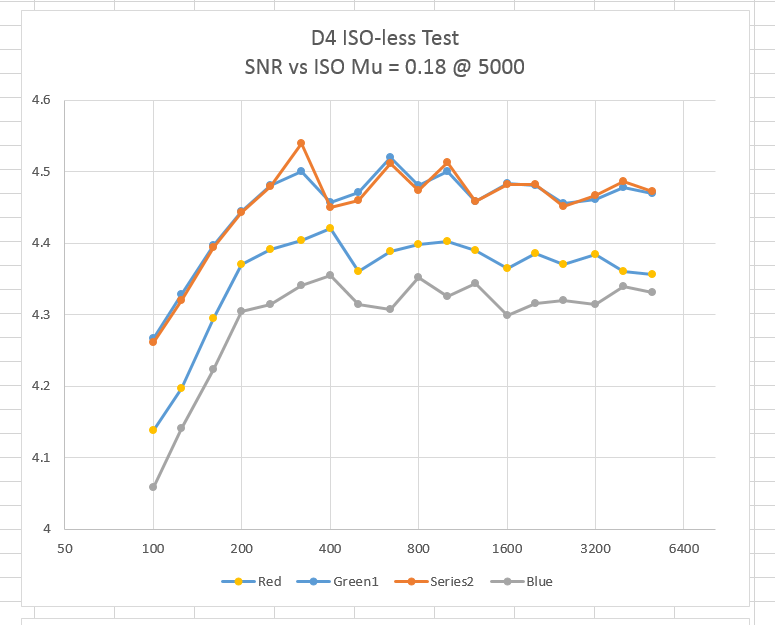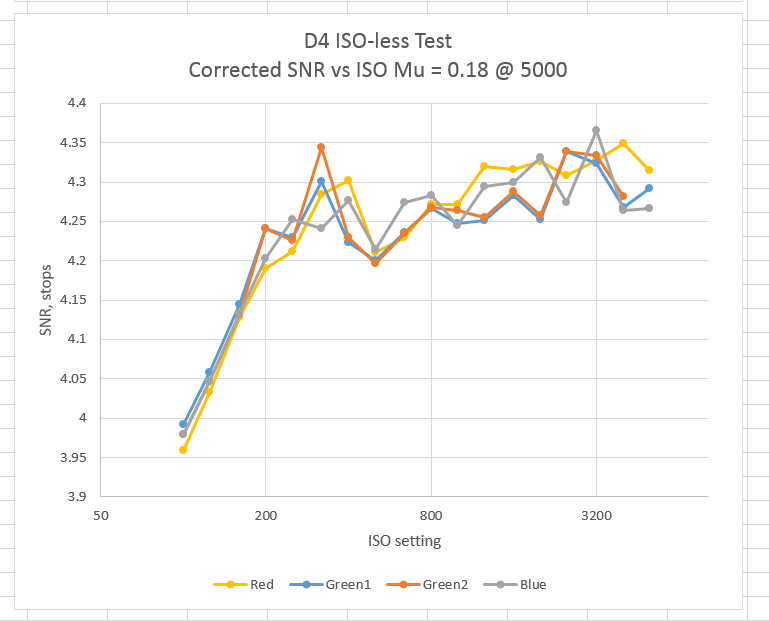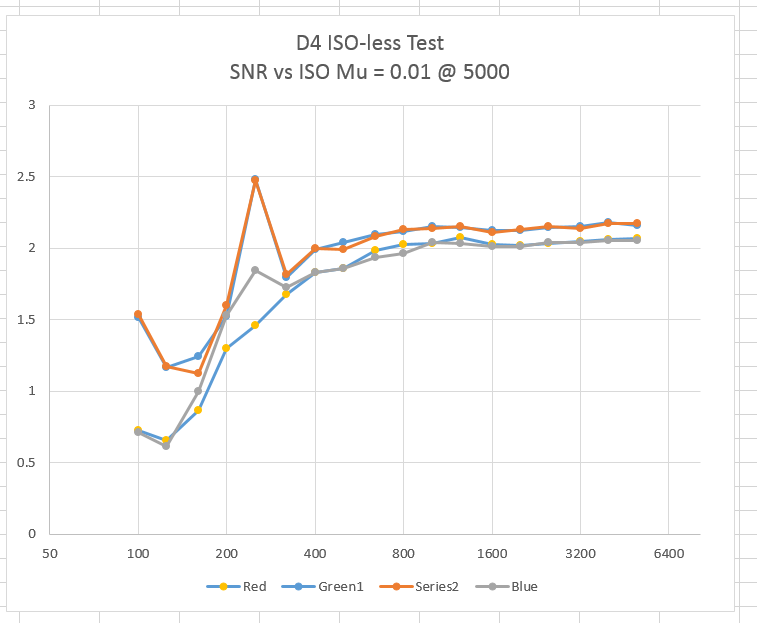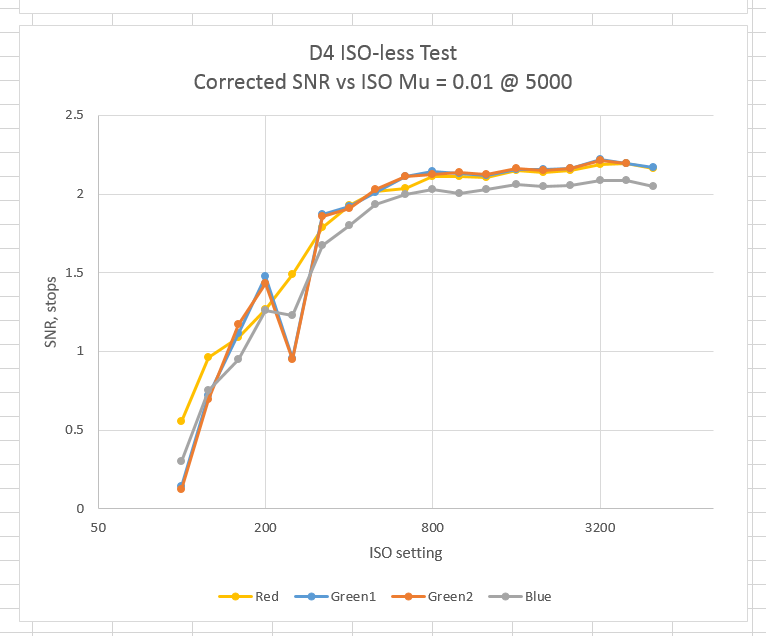Now that we have the data set described in this post, we can mine it in unconventional ways (as composed to the more-or-less standard look at the data presented yesterday). One thing that I’m usually interested in when I get a new camera is where I should stop turning up the ISO knob and just push in post.
I devised a method to take a look at that. You specify the highest ISO that you wish to consider, and what the mean signal level should be at that ISO as a ratio to full scale. For example, if you’re interested in an 18% mean, you’d specify it as 0.18. Then you tell the method what’s the lowest ISO you want to consider. The program picks a raw channel, finds the sample closest to the specified mean at the highest ISO and records the standard deviation and the SNR. Then it looks at the samples at the next ISO down from that in the data set, and finds the mean that corresponds to the same amount of light hitting the sensor, and records the standard deviation and the SNR. It keeps going until it reaches the lowest ISO of interest. It goes on to the next raw channel, and does the same thing, until it’s performed the calculations for all the raw channels.
The result is a graph like this:
Since the data is only exposed at 1/3 stop intervals, the found mean can be 1/6 of a stop away from the desired mean. If we assume that the noise is mostly photon noise, we can correct for that error:
It works pretty well at a mean of 18%, but, as you’ll see below, not so well for much darker tones.
If we pick the mean at ISO 5000 to be 1%, here’s what we see:
The “corrected” curve looks like this:
Not so good correction, huh? You’ll note that the SNR in all cases for a mean of 1% at ISO 5000 is below 3 stops, which is my personal limit for decent photographic quality.
What can we learn from those curves? It looks to me that turning the ISO knob on the D4 much past 400 doesn’t help much.
Since the D4 fits our model so well, we could get prettier curves by running the test on the modeled camera rather than the measured camera, but we can’t count on that.




Leave a Reply